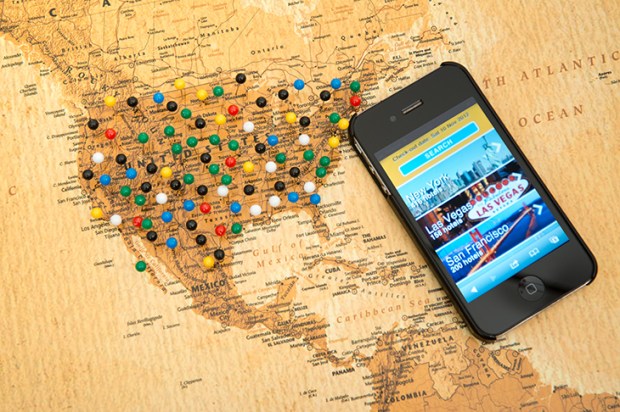Finally, just in the last few years I’d say, we’ve all begun to accept the role of nature in the great nature/nurture debate. Though we’ve squirmed and baulked, we mostly now do accept that genes inform (to a greater or lesser extent) not just our height and eye-colour, but our personalities: our intelligence, our disposition. We’re more like our parents than we are like strangers — and what, after all, was so very controversial about that?
So now we’re at peace with our genes, here’s another mental challenge, a curious discovery by geneticists that’s even more at odds with our intuition. This one concerns what we’ve come to think of as the friendlier of the two forces that form us: nurture, the environment, the part we imagine we can control so as to make a better world.
It comes to us, this finding, via Professor Robert Plomin, who has spent a lifetime figuring out what makes us who we are. Plomin’s an American, with no hidden agenda and no political axe to grind either. He’s director of Teds, the Twins Early Development Study, which has looked at more than 15,000 families over 20 years.
What Plomin says — and this is a rough and slipshod summary — is that the environment does play a large part in making us who we are, from conception to the grave. But it doesn’t affect us in quite the way we’ve always assumed. We all imagine that if children are brought up in the same environment, by the same people, it will make them more similar. We take for granted that a family forms each child in its own image. But as it turns out, in study after study, sharing an environment — a family, a school or a socio-economic group — does not make children more alike. Any similarities between siblings are almost entirely the result of their shared genes. Though they grow up together, play together, share parents, grandparents and friends, they would be as alike or not alike in most measurable personality traits had they been separated at birth. Put another way, an adopted child ends up in adulthood in many ways no more like his or her adoptive parents than they are like a random person on the street.
It’s not that the world doesn’t affect kids; that all those interminable hours spent playing catch and reading stories are wasted. It’s just that the effect on each child’s phenotype (his observable character) is different, which is to say unpredictable. For all our certainties about where and how children thrive, we mostly just don’t know.
It’s a difficult, this, for any mother or father — especially in the West. We obsess over parenting styles, nannies, teachers — most of us quite sure that our intuitions amount to universal truths. We select schools, painstakingly, for the sorts of boys and girls they’re reputed to turn out — but if a school affects each child differently, then there’s no such thing as an Etonian or a Harrovian; no great institutional shared effect. So how then can we ensure our darlings get ahead?
It’s tempting then to just say: nonsense! There are things one just knows that no scientist can gainsay. But as one who’s tried, I have to tell you, the evidence is hard to hide from. To start with, it’s tricky to argue with Plomin. Professor P is the undisputed heavyweight champion in the world of behavioural genetics and I’ve found in the past that any opposition from his peers evaporates at the mere mention of his name. ‘Oh, Plomin? Well if Plomin says so….’ He first raised the troubling matter of ‘non-shared environmental effect’ back in 1987. Nearly three decades later, his basic finding still stands.
And then don’t we all know, deep down, that what he says is true? As adults it pleases us to imagine we have terrific control over a child’s development; that we mould our children like potters shaping clay. But look at it from the perspective of the child you once were, recall how singular your experiences were, and how specific to you.
My brother and I had a nanny who, for half a decade, had total control over our world. She was chosen by our mother, who imagined her sunny nature would shine down on both of us alike. It did not. She disliked girls. So this shared environment had a very non-shared environmental effect. But then that’s true of almost every adult in a child’s life. It pleases most parents to imagine they treat their children equally, but the reality is at odds with their spin. Siblings in Plomin’s studies report very different treatment by their parents, and independent observers side with the kids.
If you’ve been a sibling, surely you remember? There’s really no such thing as an experience with a shared effect. Mealtimes around a table, that celebrated unifying force, were in truth nothing of the kind. If you hated brussels sprouts because you’d been forced to eat them at school, your sister probably gobbled them up. If you liked rice pudding, odds are she didn’t. Perhaps she radiated prodigal helpfulness during the washing up, while you glowered in disgrace.
The easiest way to understand the significance of this effect is to think of any pairs of identical twins you know or have known. Despite their similar appearances, they’re very different, aren’t they? They have different personalities, hobbies and friends. But they’re genetically identical, so all of the differences between them have been created by nurture, not nature. They’ve shared more of their lives than most siblings, yet environment has, mostly, pulled them apart.
I can quite see this is frightening. It implies a terrible lack of control. We know that nurture has this ‘non-shared’ effect, but why and how? It’s disorientating. How best then to teach, to legislate? But there’s something miraculous about it too, about our separate trajectories.
Identical twins have different fingerprints, though their DNA is the same, because as they turn and reach out in the womb, the amniotic fluid swirls differently around their fingers, creating different whorls and ridges. It’s such an unpredictable process that even with twins there’s no chance of the same exact pattern forming twice. From conception onwards, in zillions of chaotic ways, the environment shapes us differently, uniquely. That we can’t track or predict the nature of nurture seems to me an oddly wonderful thing.
Got something to add? Join the discussion and comment below.
Get 10 issues for just $10
Subscribe to The Spectator Australia today for the next 10 magazine issues, plus full online access, for just $10.
You might disagree with half of it, but you’ll enjoy reading all of it. Try your first month for free, then just $2 a week for the remainder of your first year.














Comments
Don't miss out
Join the conversation with other Spectator Australia readers. Subscribe to leave a comment.
SUBSCRIBEAlready a subscriber? Log in